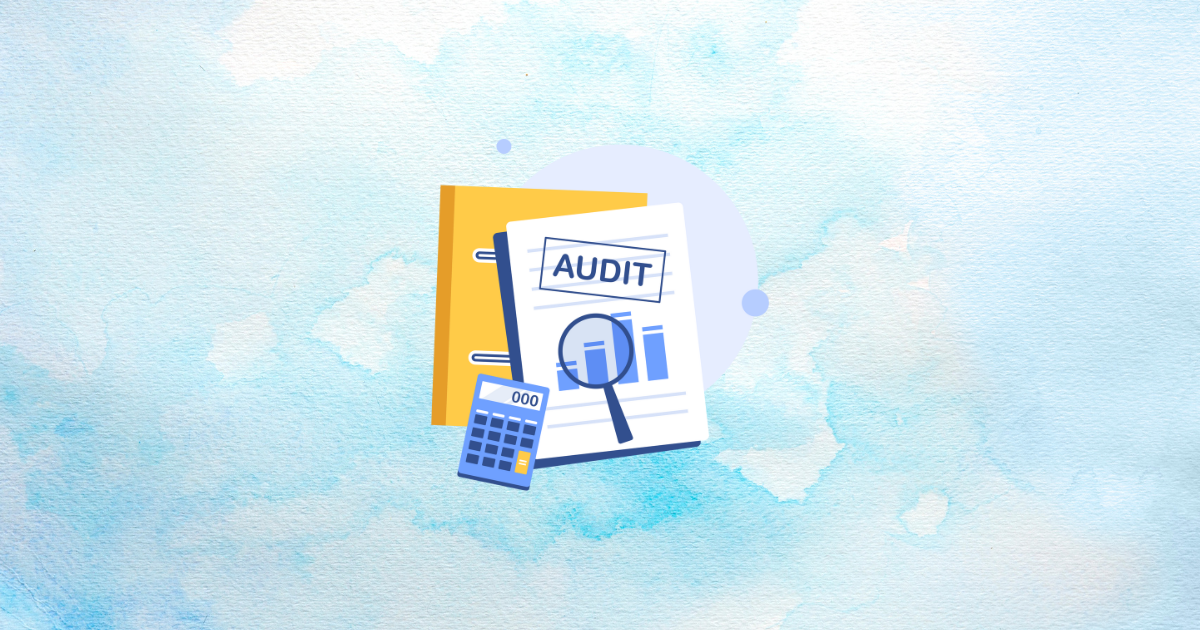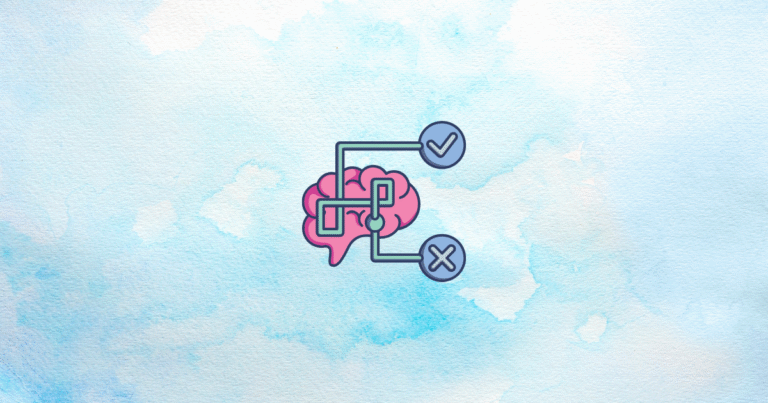Ever wondered why potential customers abandon their carts just seconds before completing a purchase? Or why that perfectly designed product page isn’t converting as well as it should? The culprit might be hidden friction points in your sales funnel that are silently driving customers away.
Friction in e-commerce is like invisible quicksand – by the time you notice it’s there, you’ve already lost valuable customers. But what if you could identify these trouble spots before they damage your bottom line?
In this comprehensive guide, you’ll discover:
- What persuasion audits are and why they’re essential for Shopify success
- How to pinpoint exactly where customers get stuck in your funnel
- Practical strategies to eliminate friction at every stage of the buying journey
- Real-world examples of stores that dramatically increased conversions
Ready to transform your Shopify store into a smooth-sailing conversion machine? Let’s dive in!
The Science of Friction in E-Commerce
Before we can fix friction points, we need to understand what they are and why they matter so much. At its core, e-commerce friction is anything that makes it harder for customers to complete a purchase – from confusing navigation to slow load times to complicated checkout processes.

Cognitive Friction Fundamentals
Every time a customer visits your store, their brain is working hard. Our brains have limited energy for decision-making, and when things get complicated, we experience what scientists call decision fatigue. This happens when the brain’s prefrontal cortex (the decision-making center) gets overworked.
When shopping online, customers face countless small decisions: Which product is best? Is this trustworthy? Should I enter my credit card details? Each decision uses mental energy, and when that energy runs low, customers are more likely to give up and leave.
Even simple things like difficult-to-read fonts, cluttered layouts, or confusing product descriptions can drain this mental energy faster, creating friction that drives potential buyers away.
Persuasion Audit Definition
A persuasion audit is a systematic review of your entire Shopify store to identify these points of friction. Think of it as a comprehensive health check for your sales funnel – examining every step from a customer’s first interaction to post-purchase experience.
Unlike standard analytics that just tell you where customers drop off, a persuasion audit helps you understand why they leave and how to fix it. It combines data analysis with psychological principles to reveal hidden barriers in the customer journey.
The goal isn’t just to make your store easier to use – it’s to make the buying process feel natural and effortless, guiding customers smoothly from interest to purchase.
Key Performance Indicators
To effectively measure friction, we need to look beyond basic metrics like conversion rates. Here are three deeper indicators that reveal where customers struggle:
- Micro-Conversion Drop-off Rates: These track smaller actions like clicking “add to cart” or entering shipping information. A sudden drop between steps signals a friction point.
- Scroll Depth vs. Attention Heatmaps: Comparing how far people scroll with where they actually focus reveals content that isn’t engaging or valuable.
- Hesitation Metrics: Mouse movements, hover patterns, and field abandonment can show where customers get confused or uncertain.
These specialized metrics give us a much clearer picture of customer behavior than broad statistics alone. Armed with this knowledge, we can now explore the specific stages where friction typically occurs in Shopify stores. Feeling overwhelmed by these technical indicators? Don’t worry – identifying friction points is simpler than you might think, as we’ll see in the next section!
The Shopify Funnel Anatomy
Your Shopify store isn’t just a website – it’s a carefully structured journey that guides visitors toward becoming customers. Understanding this journey is essential for spotting where things go wrong. Let’s break down the typical Shopify funnel and identify the common friction points at each stage.
Stage-Specific Friction Points

Every stage of your sales funnel presents unique challenges:
- Awareness Stage: This is where potential customers first discover your store. Common friction points include:
- Mismatched messaging between ads and landing pages (creating confusion and distrust)
- Slow loading times that test patience and encourage bounces
- Unclear value propositions that fail to hook interest
- Consideration Stage: Here, customers are actively exploring your products. Friction often appears as:
- Information overload that overwhelms rather than informs
- Weak or poorly placed social proof (reviews, testimonials)
- Difficult product comparisons that make decisions harder
- Decision Stage: The critical moment when customers decide to buy. Friction spikes with:
- Surprise costs (shipping, taxes) appearing at checkout
- Complicated checkout forms requesting too much information
- Limited payment options that create unnecessary barriers
- Post-Purchase: Often overlooked, this stage is crucial for building loyalty. Friction here includes:
- Lack of order confirmation or tracking information
- Poor onboarding for first-time customers
- Missing follow-up that fails to encourage repeat purchases
Understanding these stage-specific friction points helps you target your improvements more effectively. But there’s another dimension to consider – the device your customers are using.
Mobile-Specific Neural Barriers
With over 70% of Shopify traffic coming from mobile devices, mobile-specific friction deserves special attention. Three key issues frequently plague mobile shoppers:
- Thumb Zone Optimization Failures: Important buttons placed where they’re hard to reach with a thumb, forcing awkward hand positions
- Vertical Scroll Fatigue: Excessive scrolling required to find information, leading to frustration and abandonment
- Mobile Form Field Anxiety: Tiny input fields, aggressive autocorrect, and difficult keyboard toggles making data entry a nightmare
These mobile-specific issues can double or even triple your abandonment rates if left unaddressed. But how exactly do you find these friction points in your own store? That’s where a systematic persuasion audit methodology comes in – and it’s easier to implement than you might think! Ready to become a friction-hunting detective? Let’s explore the step-by-step process in the next section.
Persuasion Audit Methodology
Now that we understand what friction is and where it typically appears, it’s time to roll up our sleeves and learn how to find it in your specific Shopify store. The good news? You don’t need an expensive agency or complex tools to get started – many of these methods can be implemented right away.
Data Collection Framework
Effective persuasion audits gather information from multiple sources to give you a complete picture. Here’s a practical framework anyone can use:
- Basic Analytics Tools:
- Shopify Analytics for baseline traffic and conversion data
- Google Analytics for deeper user behavior insights
- Heatmap tools like Hotjar or Lucky Orange to visualize user interactions
- Behavioral Analysis:
- Session recordings to watch actual customer journeys
- Exit-intent surveys to learn why people leave
- Funnel visualization to identify major drop-off points
- Customer Feedback:
- Post-purchase surveys asking about the shopping experience
- Customer service inquiries that highlight common problems
- User testing with 5-7 people trying specific tasks on your site
By combining these approaches, you’ll gather both quantitative data (the numbers) and qualitative insights (the “why” behind the numbers), giving you a more complete understanding of friction points.
Friction Identification Matrix
Once you’ve collected your data, it’s time to organize and prioritize your findings. A simple but effective approach is creating a Friction Identification Matrix with these three elements:
- Cognitive Load Scoring: Rate each page or element on a 1-5 scale based on how mentally demanding it is for visitors. Higher scores indicate more potential friction.
- Emotional Friction Index: Assess negative emotional responses (confusion, frustration, distrust) triggered by different parts of your store.
- Behavioral Impact Analysis: Quantify how significantly each friction point affects user behavior (bounce rates, cart abandonment, etc.).
This matrix helps you prioritize improvements by focusing on issues that score high across all three dimensions – these represent your most critical friction points.
For example, if your checkout page has a high cognitive load score (4/5), triggers significant frustration (4/5), and leads to a 70% cart abandonment rate, it’s clearly a top priority for optimization.
With your friction points now identified and prioritized, it’s time for the most exciting part – fixing them! In the next section, we’ll explore proven optimization strategies for each stage of your funnel. Are you ready to transform those friction points into smooth pathways to purchase? Let’s tackle the solutions!
Optimization Strategies by Funnel Stage
Now comes the fun part – eliminating those friction points you’ve discovered. Let’s explore practical fixes for each stage of your funnel that you can implement quickly for real results.
Awareness Stage Fixes
The awareness stage is all about making a strong first impression. Here’s how to remove early friction:
- Landing Page Improvements:
- Create a clear, compelling value proposition visible within 3 seconds
- Optimize images to load in under 2 seconds (compress files, use WebP format)
- Remove distracting elements that don’t contribute to your main message
- Ad-to-Page Continuity:
- Use consistent imagery and messaging between ads and landing pages
- Ensure promised benefits in ads are immediately visible on the landing page
- Maintain the same tone, vocabulary, and visual style throughout
These improvements help build trust and reduce the “wait, this isn’t what I expected” reaction that causes early abandonment.
Consideration Stage Enhancements
The consideration stage is where customers evaluate your products and decide if they’re worth buying:
- Product Page Persuasion:
- Limit product descriptions to 5-7 key benefits (avoid overwhelming with details)
- Place customer reviews prominently near the add-to-cart button
- Add short (3-second) product preview videos that play automatically on hover
- Information Organization:
- Use expandable sections (accordions) to organize detailed information
- Create simple comparison tables when offering multiple product options
- Highlight bestsellers or “most popular choice” to simplify decisions
These strategies make product information more digestible and help customers feel confident in their choices.
Decision Stage Streamlining
The decision stage is where most abandoned carts happen – here’s how to smooth the path to purchase:
- Checkout Optimization:
- Reduce form fields to the absolute minimum (aim for 7 or fewer)
- Add security badges near sensitive information fields (credit card, address)
- Include a progress indicator showing how close customers are to completion
- Trust Enhancement:
- Display shipping costs early in the process (no surprises at the end)
- Add transparent inventory information (“12 left in stock”)
- Offer multiple payment options, including popular digital wallets
These changes reduce the common “second thoughts” that occur during checkout.
Post-Purchase Loyalty Building
After the purchase, focus on building satisfaction and encouraging repeat business:
- Confirmation Experience:
- Create a celebratory order confirmation page with next steps clearly outlined
- Send immediate confirmation emails with tracking information
- Include shareable content that encourages social media posting
- Follow-Up Sequence:
- Develop a 3-day email sequence to guide new customers through using their purchase
- Send personalized product recommendations based on purchase history
- Create timely reminders for replenishment or related products
These tactics transform the post-purchase experience from an afterthought into a powerful loyalty-building opportunity.
Now that you have a toolkit of strategies, you’re probably wondering – how do I actually implement all this? Great question! Let’s look at a practical roadmap for conducting your persuasion audit and implementing these improvements in a manageable way. Ready to turn these insights into action? Let’s create your implementation plan!
Implementation Roadmap
Transforming your Shopify store doesn’t happen overnight, but with a structured approach, you can make significant improvements in just a few weeks. Here’s a practical roadmap to guide your persuasion audit from start to finish.
Audit Process Timeline
Breaking the process into manageable phases helps you stay organized:
| Phase | Duration | Key Activities |
|---|---|---|
| Baseline Measurement | 7 days |
|
| Friction Mapping | 14 days |
|
| Prioritization | 3 days |
|
| Iterative Testing | 21 days |
|
This 45-day timeline is flexible – you can compress it for urgent issues or extend it for more thorough testing. The key is consistent progress rather than trying to fix everything at once.
Ethical Guardrails
As you optimize your store, it’s essential to maintain ethical standards. Removing friction should never mean manipulating customers or creating false urgency:
- Avoid Dark Patterns: Tactics like hidden costs, forced account creation, or misleading countdown timers might boost short-term sales but damage long-term trust
- Be Mindful of Cognitive Overload: While simplifying choices can help customers, removing too much information or limiting options inappropriately can lead to regret and returns
- Protect Vulnerable Users: Ensure your optimizations don’t exploit impulse purchases or create pressure that might harm vulnerable customers
The most successful Shopify stores strike a balance – making purchasing easier while still empowering customers to make informed decisions.
But does all this work actually pay off? Absolutely! The proof is in the results other store owners have achieved. Let’s look at some inspiring case studies that show the potential impact of persuasion audits on real businesses like yours.
Case Studies & Results
Theory is great, but nothing beats seeing real results. These case studies demonstrate the dramatic impact that identifying and fixing friction points can have on your bottom line.
Fashion Retailer: 189% Mobile Conversion Rate Increase
A mid-sized clothing brand was struggling with poor mobile performance despite strong desktop sales. After conducting a persuasion audit, they discovered several key friction points:
- Product image carousels required precise tapping, causing frustration
- Size selection dropdowns were difficult to use with fingers
- “Add to cart” buttons were positioned where accidental taps occurred frequently
Interventions:
- Redesigned product pages with thumb-friendly controls
- Created larger, easier-to-tap size selectors
- Repositioned key buttons to the natural thumb zone
Results: Mobile conversion rates jumped by 189% within 30 days, and customer service complaints about the mobile experience dropped by 72%.
Electronics Brand: 57% Checkout Completion Lift
An electronics retailer was losing customers at checkout, with a 78% cart abandonment rate. Their persuasion audit revealed:
- A 14-field checkout form that overwhelmed customers
- Generic copy that didn’t address common concerns about electronics purchases
- Limited payment options that excluded younger buyers’ preferred methods
Changes:
- Reduced checkout fields from 14 to 7 by making optional fields truly optional
- Added personalized reassurance about warranties and returns
- Integrated popular digital wallet payment options
Results: Checkout completion rates improved by 57%, and the average time to complete checkout dropped from 4.2 minutes to 1.8 minutes.
Subscription Service: 33% Lifetime Value Improvement
A subscription box company had good initial conversion rates but poor retention, with most customers canceling after just 2-3 months. Their audit uncovered post-purchase friction:
- Lack of guidance on how to use subscription products
- No community building or sharing opportunities
- Generic follow-up emails that didn’t acknowledge customer preferences
Strategy:
- Created a structured onboarding sequence with product usage tips
- Developed a members-only community space for subscribers
- Implemented preference-based communication and rewards
Result: 90-day retention improved by 41%, leading to a 33% increase in average customer lifetime value.
These case studies show that even targeted improvements in specific funnel areas can yield significant results. But what’s next for persuasion auditing? As technology evolves, so do the opportunities to understand and improve customer experiences. Let’s peek into the future of friction identification and what it means for your Shopify store.
Future of Persuasion Auditing
While the fundamentals of human psychology remain constant, the tools and techniques for identifying friction are rapidly evolving. Staying ahead of these trends can give your Shopify store a competitive edge for years to come.
Emerging Technologies
Several exciting technologies are making persuasion audits more powerful and accessible:
- AI-Powered Friction Prediction: Machine learning algorithms that can analyze your store and predict friction points before they impact customers
- Voice and Emotion Analysis: Tools that analyze customer feedback for emotional cues, helping identify friction that customers might not explicitly mention
- Automated A/B Testing: Systems that continually test variations of your store to identify and fix friction points automatically
These technologies are becoming more affordable and user-friendly, making them accessible even to smaller Shopify stores.
Predictive Models
The future of persuasion auditing lies in prevention rather than cure:
- Lifetime Friction Risk Scoring: Models that predict which customers are most likely to encounter friction based on their behavior patterns
- Cross-Device Experience Optimization: Tools that ensure consistent, friction-free experiences as customers move between devices during their buying journey
- Personalized Friction Reduction: Systems that adapt the shopping experience to minimize friction points for individual customers based on their preferences and behaviors
As these predictive capabilities mature, Shopify stores will be able to address potential friction before customers even notice it, creating truly seamless shopping experiences.
The most exciting part? Many of these technologies are becoming integrated directly into Shopify’s ecosystem, making them accessible without specialized technical knowledge.
Conclusion: Your Friction-Free Future
Eliminating friction from your Shopify funnel isn’t just about technical optimization – it’s about deeply understanding your customers and removing the barriers between them and a satisfying purchase experience.
By conducting regular persuasion audits, you’ll not only increase your conversion rates but also build stronger customer relationships based on ease, trust, and satisfaction.
Remember these key takeaways:
- Friction occurs at every stage of the funnel – awareness, consideration, decision, and post-purchase
- A systematic audit process helps you identify and prioritize friction points
- Targeted improvements can yield dramatic results, as our case studies show
- Both psychological principles and technical tools are essential for effective friction reduction
Ready to transform your Shopify store into a friction-free conversion machine? Start with one funnel stage, identify its key friction points, and implement the targeted fixes we’ve discussed. Then move to the next stage, creating a continuously improving shopping experience.
Looking to take your Shopify store to the next level? Growth Suite for Shopify can automate many aspects of persuasion audits, helping you identify and fix friction points faster. Try it today to see how easily you can boost your conversions and create happier customers!




